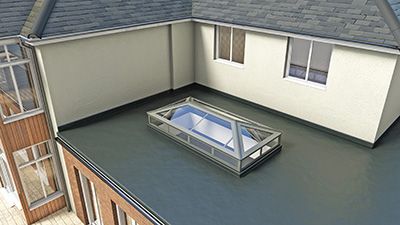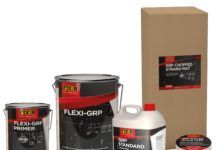 With autumn the busiest season for flat roofing, it’s likely that you’ve been on the go carrying out various water and weather proofing repairs. What’s probably less likely, however, is the demand for the insulation to be upgraded.
With autumn the busiest season for flat roofing, it’s likely that you’ve been on the go carrying out various water and weather proofing repairs. What’s probably less likely, however, is the demand for the insulation to be upgraded.
When refurbishing a flat roof, it’s always important to consider the insulation too. It may lead to re-roofing a greater section of the roof, but, there are many benefits to be had. From the homeowner’s perspective, they get to recoup their initial outlay with lower heating bills throughout the year and can enjoy cooler rooms in the summer months. Also, it gives them more scope for using the room below, as it’s no longer at the mercy of extreme temperatures.
From your perspective, by encouraging customers to upgrade their insulation, you have the opportunity to increase your revenue stream and at the same time, enhance your reputation by offering knowledge and advice on best practice.
More importantly, you can build customer confidence with your knowledge of legal compliance. Part L of the Building Regulations comes into play if a full re-roof is required; with the whole roof needing to be brought up to the thermal efficiency demanded by the regulations. In practical terms, this means a strip and re-roof, or just installing a new layer of waterproofing will require upgrading the roof’s thermal performance.
Part L also comes into being if more than 50% of the roof needs refurbishing. If you’re a member of CompetentRoofer, you will be able to sign off Part L yourself, without waiting for a Local Authority Surveyor to inspect your work. As well as saving time – leaving you free to get on with your next job – you will save your customers a fee of between £200 and £400 a job for a domestic installation.
The best approach
So, if your next flat roof refurbishment requires additional or replacement insulation, how do you best approach it? This depends on the existing insulation or how the room is used. Part L may require additional thermal insulation where the roof underneath is heated e.g. a kitchen or bathroom, or if you have a cold roof and want to improve the insulation. The preferred option is to convert it to a warm roof by applying a vapour control layer, rigid board type insulation and new waterproof covering above the deck – with any existing roof ventilation being closed off.
If there is existing insulation above the ceiling, ideally it should be removed. Failing that, you should calculate how much new insulation is required above the deck to avoid condensation and leave the ventilation in situ. If there is no evidence of condensation, extra insulation could be added above the ceiling by removing part of the deck during the work. The thickness of the insulation will be governed by the depth of the joist, and this may not allow sufficient insulation to meet the regulations. Through-ventilation must be maintained and the clear space between the top of the insulation and the deck must be at least 50mm (2ins).
If you have a warm roof, then typically the insulation will be above the roof deck. This is usually the most satisfactory construction for domestic properties as it avoids the need for ventilation of the roof structure.
There are many types of insulation available for warm roofs, which should always be fitted in conjunction with the manufacturer’s guidelines. However, the choice depends most upon the rooftop use and the degree of energy saving and carbon reduction required. The most common materials are as follows:
Polyisocyanurate (PIR): The most commonly used; a very efficient insulator and is lightweight and available in various sheet sizes and thicknesses – often advantageous when there are height considerations.
Mineral Wool (or Rockwool): A heat and fire resistant material, also available in a range of thicknesses. It should be a sufficiently strong grade to withstand foot traffic on the roof. A thicker layer may be needed to achieve the efficiency required.
Expanded Polystyrene: This is also an efficient insulator, however it’s very heat-sensitive and will require a protective overlay if bitumen felt is to be laid over it.
Composite Boards: A stable and durable material that is usually supplied in slabs in a range of thickness with an OSB or plywood facing. It’s a good insulator and is well suited to reinforced bitumen membrane waterproofing.
So, when you’re next called upon to repair a flat roof, it’s time to think insulation. If it’s something you’ve previously shied away from, don’t hesitate to turn to a supplier who will be able to give expert help and advice; understanding legal compliance and making the right choice for your customer are key.



